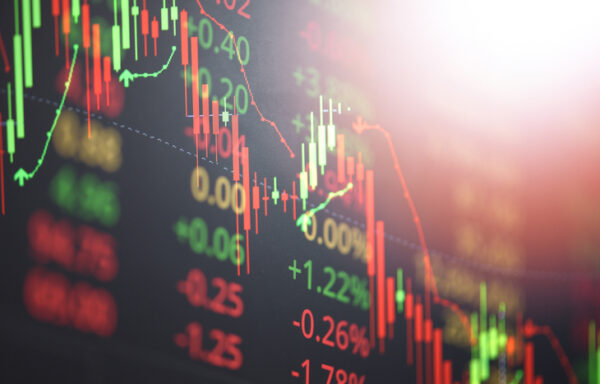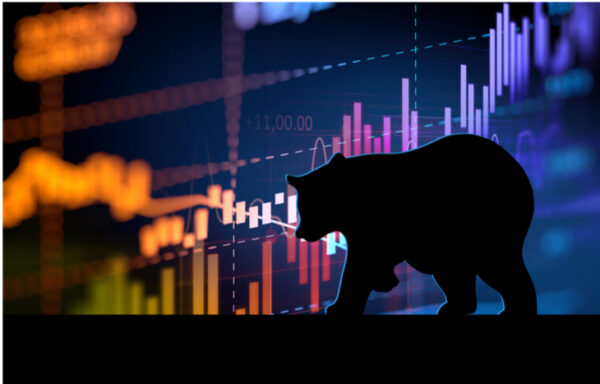It’s Time to Ride Your Winners
Alan “Ace” Greenberg was a legend on Wall Street. Greenberg arrived at Bear Stearns in 1949 with no experience in financial markets.
Starting from the bottom rung of the trading floor, Greenberg rose through the ranks to become CEO in 1978, a position he held until 1993.
Greenberg was executive chairman when Bear was forced to sell itself to J.P. Morgan during the financial crisis, a sad ending to an otherwise glorious career.
Although he had no formal background in securities or trading, Greenberg thrived on the trading floor. A former college football player, he was physically and mentally tough. He was known to have “nerves of steel” and a willingness to take big risks.
But Greenberg also was quick to cut his losses if a trade went in the wrong direction.
I’m thinking about “Ace” after learning that investors have pulled a record $135.5 billion from U.S. stock mutual funds and exchange-traded funds (ETFs) this year. (That’s according Refinitiv Lipper, as reported by The Wall Street Journal.)
This news, coming during a year when the S&P 500 has risen 24%, flies in the face of Greenberg’s famous mantra: “Ride the winners, sell the losers.”
It seems pretty simple…
- Ride the winners. If an investment is going up, don’t sell it!
- Sell the losers. If an investment is losing money, dump it and move on!
And yet it’s so hard to do.
Opportunity Costs: The Importance of Risk Management
Who among us hasn’t ridden a stock down because we couldn’t admit we were wrong?
When that happens, we’re sure it couldn’t be that our analysis is flawed. Some nefarious force must be manipulating the stock…
Either that, or we think Wall Street just doesn’t see what we see yet. We tell ourselves it’s only a matter of time.
Meanwhile, the principal investment gets smaller. We’re so focused on it that we’re unable to put that money into something better.
That missed chance at a better investment is called “opportunity cost.”
But no one wants to spend their retirement thinking about what might have been…
The solution: Set a stop loss order when you make a purchase. A stop loss will trigger a sale when the stock falls to a certain level. This takes the emotion out of the decision, and it will keep you from suffering bigger losses.
You can set a stop loss order at any level you wish. The Oxford Club recommends placing a trailing stop 25% below your entry price.
Using a strategy like trailing stops takes the emotion out of the decision making. As human beings, we’re all fallible and prone to make mistakes. Sometimes the same ones over and over…
Avoid Overcompensating for Investing Risk
How many of us have sold a stock because we thought it had gone up “too much” and was surely headed for a fall?
Some of my biggest investing mistakes have been selling “too soon.” I did this with Facebook (Nasdaq: FB), Apple (Nasdaq: AAPL) and, more recently, Twilio (NYSE: TWLO).
I made money on all those stocks… but not nearly as much as I could have.
Which brings us back to the data on all the money flowing out of the U.S. stock market. According to The Wall Street Journal, investors have been selling stocks and putting “hundreds of billions of dollars into bonds and money market funds.”
Remember: The S&P 500 is up 24% this year and has hit a series of all-time highs.
Instead of “selling a winner” and going to cash (or bonds that yield bubkes), investors are better off rebalancing.
This is especially important for index investors. Make sure you’re really diversified by owning a variety of funds that focus on different asset classes, including international stocks.
(And as I’ve written before, index investors may be unaware of the risks they’re taking because megacap tech stocks have such a big impact on the S&P 500.)
When It Pays to Go Against Your Gut
Use the end of the year as an opportunity to rebalance your portfolio. Rather than selling outright, remember the famous Wall Street mantra: “The trend is your friend.”
If you choose to “let it ride,” just make sure the stop loss orders are set so you don’t give back all the gains.
Money leaving the market is evidence that people are not giddy about stocks. Bullish sentiment has averaged just 36% in the past two months, according to the American Association of Individual Investors.
That’s down from 50% in early 2018. Clearly, this is not the 1990s. There is very little “irrational exuberance” these days.
In fact, disbelief in the rally runs so deep, 42% of Americans believe the Dow is “about the same level” as it was at the start of 2019, according to the Financial Times. And 18% believe the market has gone down this year.
From a contrarian perspective, this is a good sign for the market. If people are still skeptical (or bearish), that means they haven’t put all their money into the market.
Which reminds me of another saying made famous by Warren Buffett…
“Be fearful when others are greedy. Be greedy when others are fearful.”
[adzerk-get-ad zone="245143" size="4"]About Aaron Task
Aaron is an expert writer and researcher who formerly served as editor-in-chief at Yahoo Finance, digital editor of Fortune, and executive editor and San Francisco bureau chief of TheStreet. You may have also seen him as a guest on CNBC, CBS This Morning, Fox Business, ABC News and other outlets.
A prolific writer and commentator, Aaron is the former host of Yahoo Finance’s video program The Daily Ticker. He has also hosted podcasts for Fortune (Fortune Unfiltered) and TheStreet (The Real Story). His latest on-air passion project, Seeking Alpha’s highly rated Alpha Trader podcast, features top Wall Street experts dissecting the market’s latest news and previewing significant upcoming events. He also regularly provides analysis for the free e-letter Wealthy Retirement, which we will be republishing here on Investment U.






